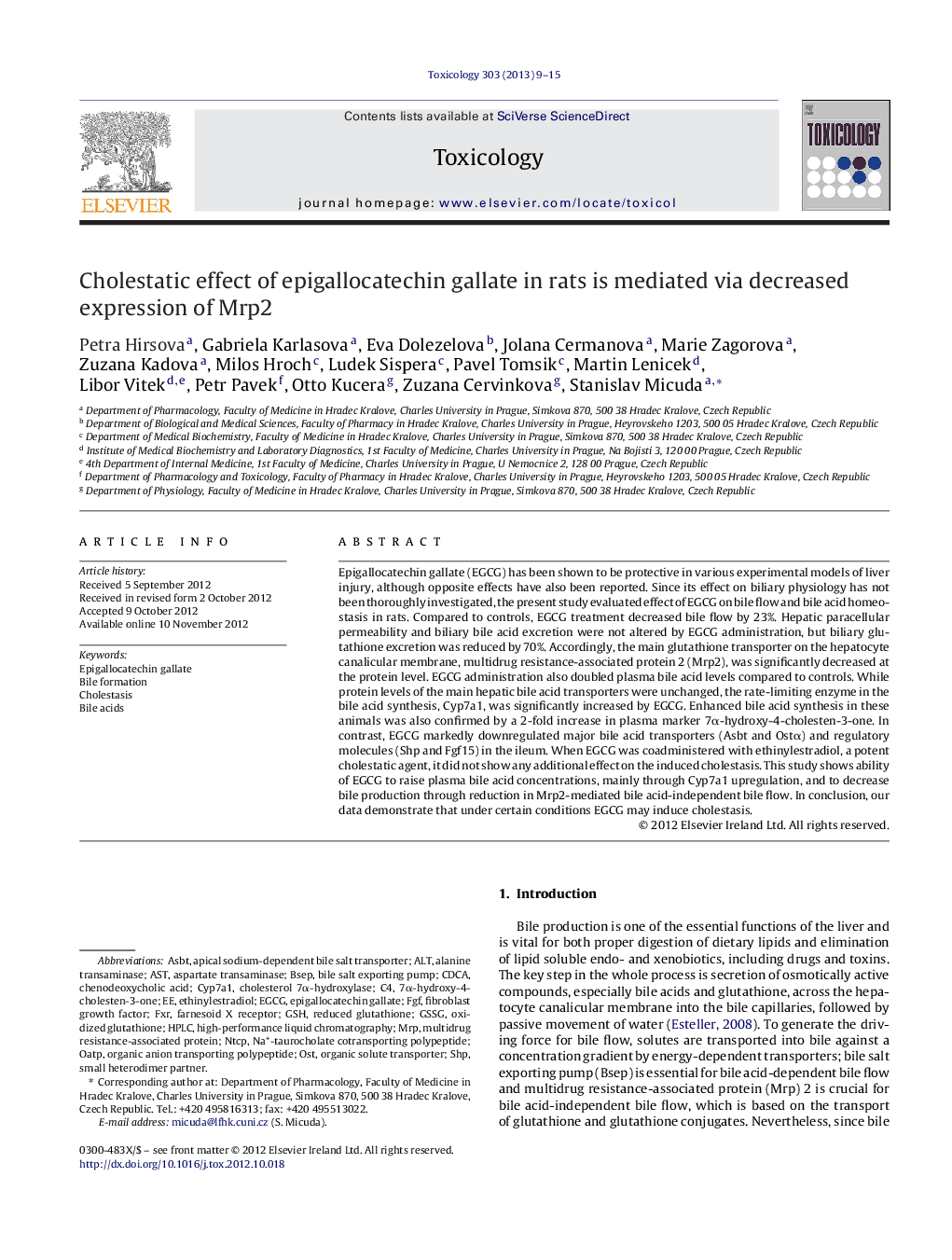| Article ID | Journal | Published Year | Pages | File Type |
|---|---|---|---|---|
| 5859465 | Toxicology | 2013 | 7 Pages |
Abstract
Epigallocatechin gallate (EGCG) has been shown to be protective in various experimental models of liver injury, although opposite effects have also been reported. Since its effect on biliary physiology has not been thoroughly investigated, the present study evaluated effect of EGCG on bile flow and bile acid homeostasis in rats. Compared to controls, EGCG treatment decreased bile flow by 23%. Hepatic paracellular permeability and biliary bile acid excretion were not altered by EGCG administration, but biliary glutathione excretion was reduced by 70%. Accordingly, the main glutathione transporter on the hepatocyte canalicular membrane, multidrug resistance-associated protein 2 (Mrp2), was significantly decreased at the protein level. EGCG administration also doubled plasma bile acid levels compared to controls. While protein levels of the main hepatic bile acid transporters were unchanged, the rate-limiting enzyme in the bile acid synthesis, Cyp7a1, was significantly increased by EGCG. Enhanced bile acid synthesis in these animals was also confirmed by a 2-fold increase in plasma marker 7α-hydroxy-4-cholesten-3-one. In contrast, EGCG markedly downregulated major bile acid transporters (Asbt and Ostα) and regulatory molecules (Shp and Fgf15) in the ileum. When EGCG was coadministered with ethinylestradiol, a potent cholestatic agent, it did not show any additional effect on the induced cholestasis. This study shows ability of EGCG to raise plasma bile acid concentrations, mainly through Cyp7a1 upregulation, and to decrease bile production through reduction in Mrp2-mediated bile acid-independent bile flow. In conclusion, our data demonstrate that under certain conditions EGCG may induce cholestasis.
Keywords
Na+-taurocholate cotransporting polypeptideCYP7A1OATPNtcpGSHEGCGFXRFGFSHPBSEPGSSGCDCAMRPALT7α-hydroxy-4-cholesten-3-onefarnesoid X receptorAsbtASTalanine transaminaseEthinylestradiolChenodeoxycholic acidBile acidsOstepigallocatechin gallateaspartate transaminaseBile formationorganic solute transportersmall heterodimer partnerfibroblast growth factormultidrug resistance-associated proteinOrganic anion transporting polypeptidereduced glutathionehigh-performance liquid chromatographyHPLCcholestasischolesterol 7α-hydroxylaseoxidized glutathione
Related Topics
Life Sciences
Environmental Science
Health, Toxicology and Mutagenesis
Authors
Petra Hirsova, Gabriela Karlasova, Eva Dolezelova, Jolana Cermanova, Marie Zagorova, Zuzana Kadova, Milos Hroch, Ludek Sispera, Pavel Tomsik, Martin Lenicek, Libor Vitek, Petr Pavek, Otto Kucera, Zuzana Cervinkova, Stanislav Micuda,
